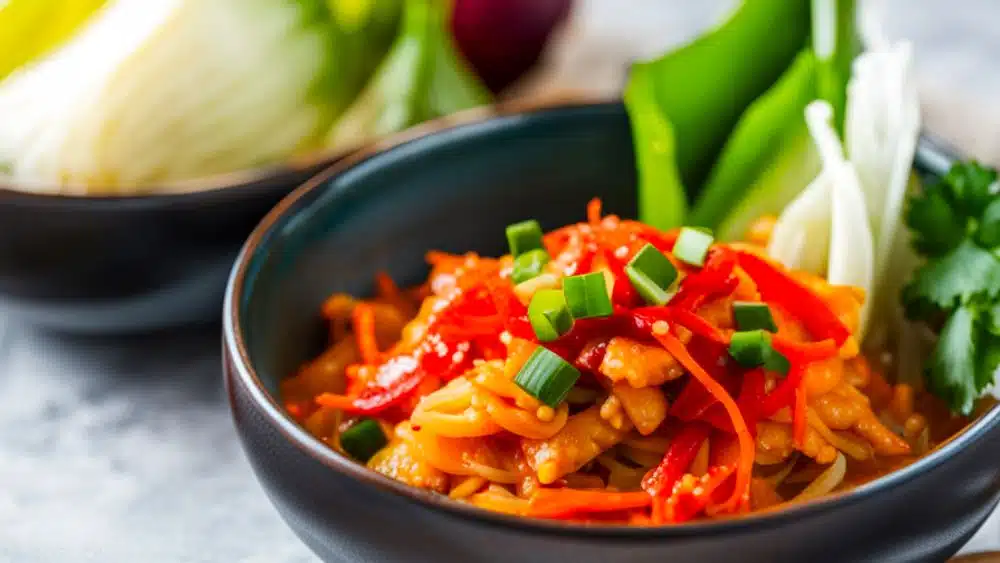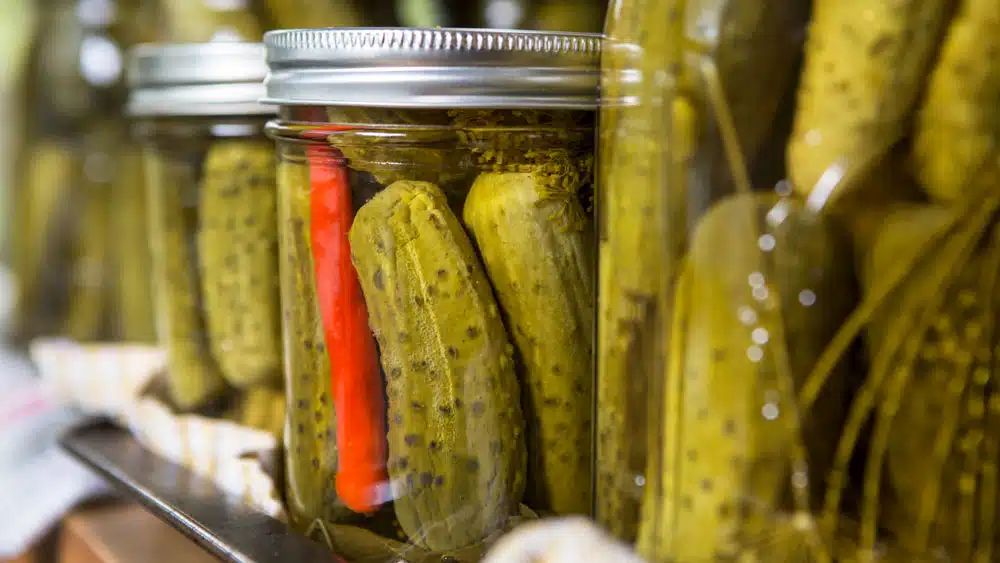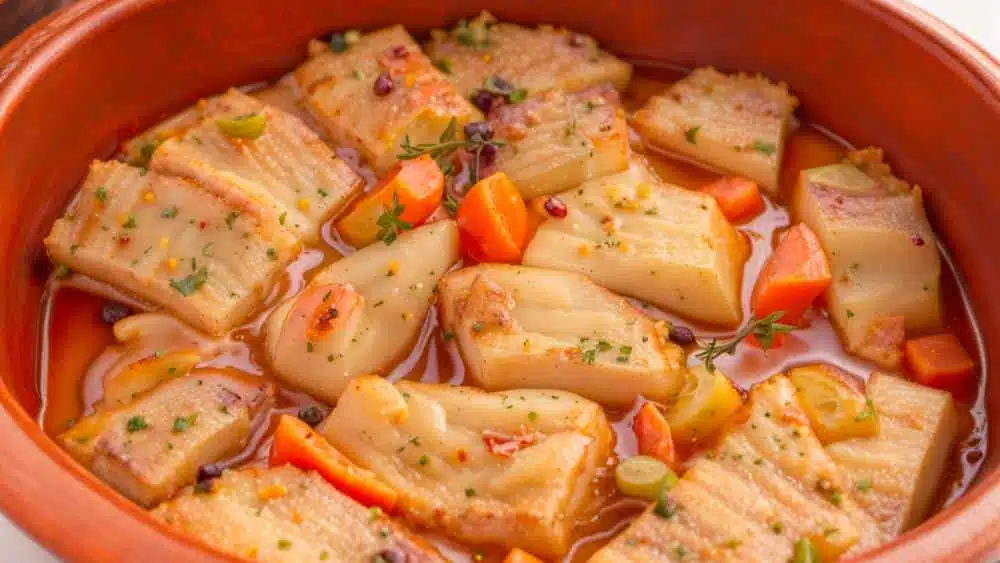Welcome and welcome !! Today they have to put a photo face because today we do Kimchiii ! (A joke of another level). Yes, we are going to do Kimchi. It is a very traditional dish of Korea , everyday and old but very loved by fans, it has a relatively short time made popularity worldwide .
And it is the best thing that could have happened because in addition to being a delicious food, it is very easy to make and carries few ingredients .
Kimchi Korean is a versatile dish and can be enjoyed alone, as an accompaniment or as an ingredient in other dishes, such as stews, soups or friedness . It is an integral food in culture and Korean diet , and its popularity has spread worldwide. We will know all its peculiarities and if they did not try it, prepare to be surprised.
Content table
About the Kimchi
What is and what is done?
Kimchi is a traditional Korea dish that has been consumed for centuries. It is a type of fermented food that is prepared with a variety of ingredients, being the main Chinese cabbage or Chinese cabbage , also known as Napa.
It is prepared through a fermentation that involves brine and a mixture of ingredients such as radish, carrot, green onion, garlic, ginger and red powder peppers. In addition, it is considered a versatile food and can be adapted to different regional tastes and preferences.
It is consumed as accompaniment at daily meals and is also used in a variety of dishes, such as soups, stews and fried.

General data on Kimchi Korean recipe
In Korea, this preparation is so important that there is a specific term to describe the act: " Kimjang ". It is an annual tradition that is done in autumn, it is assumed that families, friends and neighbors meet to prepare Kimchi together . This strengthens community ties and is an expression of identity and solidarity in Korean culture.
- A little datito is that in 2013, UNESCO officially recognized the "Kimjang" (the tradition of doing Kimchi) as an intangible cultural heritage of humanity, highlighting its cultural importance and its role in the daily life of the Koreans.
Korean food is characterized by seeking the harmony of the dish in general.
This preparation has been part of the day to day in Korean families for centuries and has a history that dates back to more than 2,000 years. Originally, they were fermented in large mud amphorae, which then buried themselves on the ground to protect it from the cold and favor the fermentation process.
It is so appreciated that it was even sent to space. Eyoo… Data from the good .
In 2008, the administration of space programs of Korea sent a special Kimchi container to the International Space Station so that Korean astronauts could enjoy their traditional dish while they were in space.
4 curious information about this preparation
- Kimchi, the winter guardian: some stories say that in the coldest months in Korea, some people stored their outdoor Kimchi jugs to freeze. Thus they kept fresh food and low temperatures without using electricity, and while preparing the ferment.
- Superpoderes?: There is a popular belief in Korea that eating this ferment can regularly increase resistance and give strength to person S (give them super powers). In fact, some famous Korean athletes claim that part of their success is due to a diet rich in Kimchi.
- Kimchi vs. Acidity: In Korea it is said that eating a small amount before a meal can help reduce stomach acidity .
- The pet: a few years ago in the city of Seoul created an official pet for the Kimchi called "Shin-Kimchi ". He is an adorable character who represents the spirit of Kimchi and its importance in Korean culture.
It is important to note that there are many variations, since each family or region in Korea can have their own recipe and methods. In addition, other ingredients and condiments can be added to adjust the flavor to preferences.
Once fermented it can be kept for months and the taste continues to evolve over time.
There I leave the recipe.
Follow on Instagram ( here )
on YouTube I upload new videos every week ( click here )

Kimchi recipe
Yield: 6 portions
Preparation time: 2 days
Ingredients
- 1 big Chinese col (napa)
- 1/4 salt cup
- 1 Daikon radish
- 2 Carrots
- 5 green onions
- 4 garlic cloves
- 1 small piece of fresh ginger
- 3 tablespoons of red powdered pepper (enjoying) (adjust the amount according to your spicy preference)
- 2 tablespoons of fish sauce
- 2 teaspoons of sugar
- 1/2 cup of water
How to do Kimchi
- Remove the damaged external leaves from the Chinese cabbage and cut it into pieces of 5 cm. In a large bowl, dissolve salt in water and submerge the Chinese cabbage completely. Let stand 2 hours to soften.
- Peel and cut the Daikon radish, carrots and green onions. Peel and finely chop the garlic cloves and grate the fresh ginger. In a separate bowl, mix all this with the red powder pepper, fish sauce and sugar.
- Rinse the Chinese cabbage with cold water and then leave it well dry in a bowl. Add the mixture of ingredients and massage so that the ingredients are impregnated in the cabbage. Transfer the Kimchi to a hermetic glass container by pressing down to remove the air.
- Leave it at room temperature 1-2 days for fermente. Then, keep a refrigerator to slow down the fermentation.





